|
In this issue MICROSOFT NEWS: Windows 11 2H22 released, mostly Additional articles in the PLUS issue • Get Plus! PUBLIC DEFENDER: Should you get a free credit report for any data breach? LEGAL BRIEF: Space flight is impossible ON SECURITY: Keeping out the bad applications INTEL NEWS: The “Intel Processor”
MICROSOFT NEWS Windows 11 2H22 released, mostly
By Will Fastie Well, it wasn’t really 2H22. It was 2022. The entire news cycle about Windows 11, starting with its announcement over 18 months ago, has been different. Maybe weird is a better descriptor. The announcement wasn’t an event; nothing was live. There wasn’t even a video from Panos Panay, who was simply noted as the author of a blog post. The surprise twist in all this, especially from the perspective of someone in the press, was that the announcement was not accompanied by a press release in Microsoft’s usual location. Instead, it was given its own microsite. The release was not mentioned on Microsoft’s home page and was noted only on the Windows page with an eyebrow link at the very top. We did get advance notice under press embargo, which was the totality of the hype surrounding the announcement. Other than that, this was all very low-key. Which begs the question: Is there anything interesting here? I’m going to discuss the parts of 2H22 (er, 2022) that I find most interesting. Next week, Susan Bradley will present her analysis of the security and safety features that are part of this release. The name, and the timing
We’ve spent a lot of time thinking this update would be designated 2H22 because that followed the convention in use for the past couple of years. It was based upon two feature releases of Windows per year. Some time ago, we learned of Microsoft’s intention to slow the cadence to one feature release per year. As a result, this feature release is simply named for the year of its issue, in this case 2022. I won’t assume that this convention will stick, as Windows’ naming conventions seem to be entirely mutable. But there’s something else you should know. 2022 is not a complete, comprehensive feature update. What’s new is that features will be released over time, perhaps synchronized with Patch Tuesday. Microsoft discusses this openly. Some of the features announced on September 20 will not be in place until October, and some will come later. Whether new features are useful or not, they’ll just dribble out, and we may or may not know about them in advance. If you’ve been following along, you know that Susan has decried “dribbling.” Another question of timing relates to what we thought would be simultaneous, side-by-side updates of Windows 11 and Windows 10. We now know that Windows 10 “2022” is coming in October, but we don’t know precisely what it will contain. There was some thought that features would be the same in both, but I’m getting the sense that most security improvements (other than patches) will be delivered only to Windows 11. Let’s look at a few features that caught my attention. Start Menu
Here we go again, with another tweak of the start menu — or, more specifically, the way you can customize the start menu. See Figure 1.
Maybe it’s just me, but this seems rather lightweight. Complaints about the start menu abound, but Microsoft doesn’t seem to be taking them seriously. Tabs in Windows Explorer (aka File Explorer)
Reducing clutter by having multiple tabs in Windows Explorer is a long-standing request of Windows users, not just for Windows 11 but for prior versions as well. I’ve been part of that chorus, so I see this as a welcome improvement. See Figure 2.
It’s a bit hard to see the two tabs in Figure 2, given the dark theme, so I added red arrows as a clue. The layout is similar to that present in most Web browsers today, so it will be familiar to most users. I haven’t tried it yet, so I’ll reserve judgment on usability until I’ve had a chance to examine it closely. However, my instincts tell me that this will be a major improvement, especially to those who need a lot of folders open at the same time. A good example is creators. I’m in that group; when putting together an issue of this newsletter, I typically have a dozen folders open at the same time. Although it’s not terribly hard to switch between them with the existing Explorer, that many folders, plus the many apps I have open at the same time, create a vast amount of clutter. Anything to help with that is a huge plus. Voice Access
I vividly remember some long-ago airplane conversations with seatmates gushing about the possibility of talking to their devices. My position was always that such a feature had some distinct downsides: my favorite example was an in-flight phone call in which the person revealed to their spouse that they had just been diagnosed with herpes. I got some horrified looks, followed almost instantly by the appropriate realization — that such a phone call on a crowded airplane was not exactly private, even when the subject matter was. Once that sank in, the almost universal response I received was “I see what you mean.” Nonetheless, the ability to talk to our devices has been getting better over the years, and there are clearly some situations in which productivity can be improved through dictation or by speaking commands to the computer. For me, writing would be faster if I dictated, because my aging fingers are no longer up to the 70+ words per minute I was capable of 50 years ago, and keyboards aren’t as good. This update comes with the preview version of a new dictation feature called Voice access. It is one of several accessibility features in this release, but it may prove to be one of the most important over time. You’ll notice something interesting about it in Figure 3 — the existing Windows Speech Recognition feature is turned off, and Voice access is enabled instead.
The fact that this is a preview feature is a bit disappointing, given that Microsoft has been talking about accessibility for the past 18 months, but it’s welcome anyway. I don’t think a quick test of the feature will be enough to decide whether it works well. It will take prolonged use to know for sure. Although Microsoft has been talking about accessibility primarily in the context of those with disabilities, I think some of these features, especially Voice access, will find a much wider audience. Studio Effects
The Studio Effects feature is a bit of bling, but it has potential. It provides improved control over video and audio for conference calls (thus improving Teams in the process). The basic settings can be seen in Figure 4.
Automatic framing keeps the person more or less centered in the display. Background blur, which you can see in Figure 4, does what its name implies and could be a terrific feature if you’re out in public and don’t want the background distracting from you. It also prevents people in the background from being easily identified, which is a nice privacy feature. Eye contact supposedly makes it appear that you are looking directly at the person on the screen, even when your eyes are looking directly at the camera. Studio Effects are very interesting, but they are also dependent upon the hardware being used. Most videoconferencing equipment I’ve used comes with proprietary control panels specific to the devices. The question is whether Studio Effects is generic or depends upon device drivers. That could be a wrinkle in adoption. The dribble
That’s about it. There are more features in the release, which you can learn about at the microsite. One thing you’ll discover is that many of the new features, especially those regarding security, are available only to enterprises, at least for now. As I mentioned, Susan will tell you more about those next week. But after stripping security and enterprise features away, there are only a small number of new things for the general user audience. We also find that some of the features won’t be available until at least next month and that others are in preview. We have Microsoft explaining that future features and enhancements will arrive on an ad hoc basis, not in the main annual release. Thus the cadence has changed. Instead of a more or less predictable semiannual or annual schedule, there’s no telling when a new feature will show up. This has been very evident in Office 365 and Edge over the past couple of years. What I’m guessing is that even though we squawk a lot about willy-nilly release schedules, Microsoft has discovered that customers are not complaining loudly, if at all. I see this in Outlook, where one tiny feature suddenly shows up — and a month later, something else appears. My favorite example is the search bar, which migrated from its position just above the message list to Outlook’s title bar. I didn’t like that change, but I adapted. If I’d gotten 20 or 30 changes all at once, I would have found adaptation much more frustrating. So perhaps there is a method in Microsoft’s madness. But prepare yourself for the dribble. It looks like that’s the way Microsoft intends to send us new features in the future.
Will Fastie is editor in chief of the AskWoody Plus Newsletter.
The AskWoody Newsletters are published by AskWoody Tech LLC, Fresno, CA USA.
Your subscription:
Microsoft and Windows are registered trademarks of Microsoft Corporation. AskWoody, AskWoody.com, Windows Secrets Newsletter, WindowsSecrets.com, WinFind, Windows Gizmos, Security Baseline, Perimeter Scan, Wacky Web Week, the Windows Secrets Logo Design (W, S or road, and Star), and the slogan Everything Microsoft Forgot to Mention all are trademarks and service marks of AskWoody Tech LLC. All other marks are the trademarks or service marks of their respective owners. Copyright ©2022 AskWoody Tech LLC. All rights reserved. |
|||||||||||||||||||||||||

















